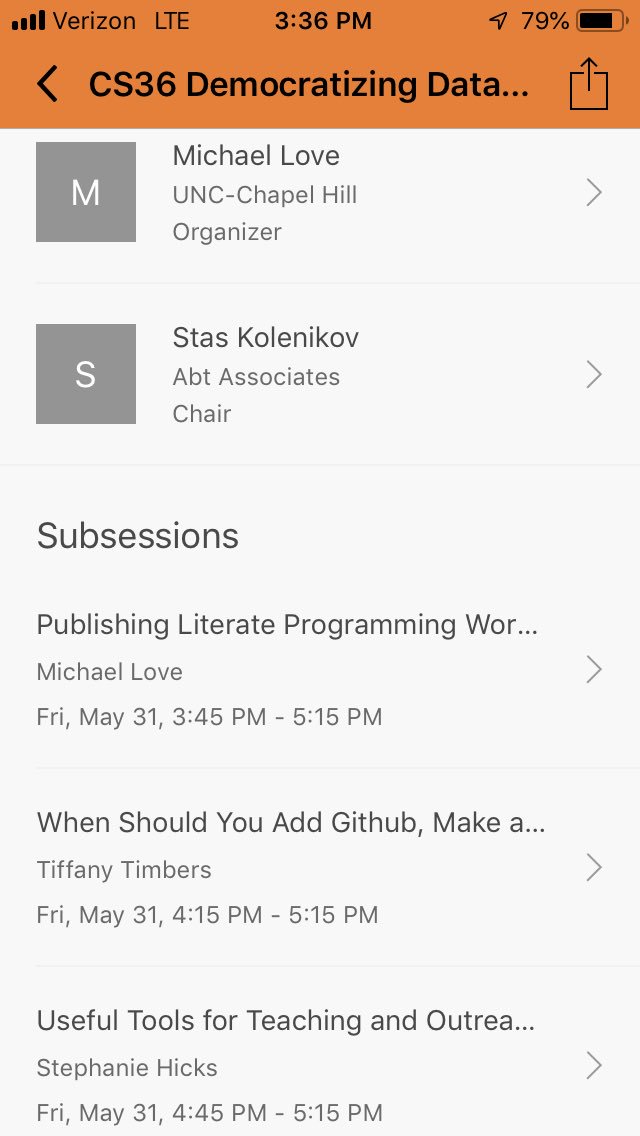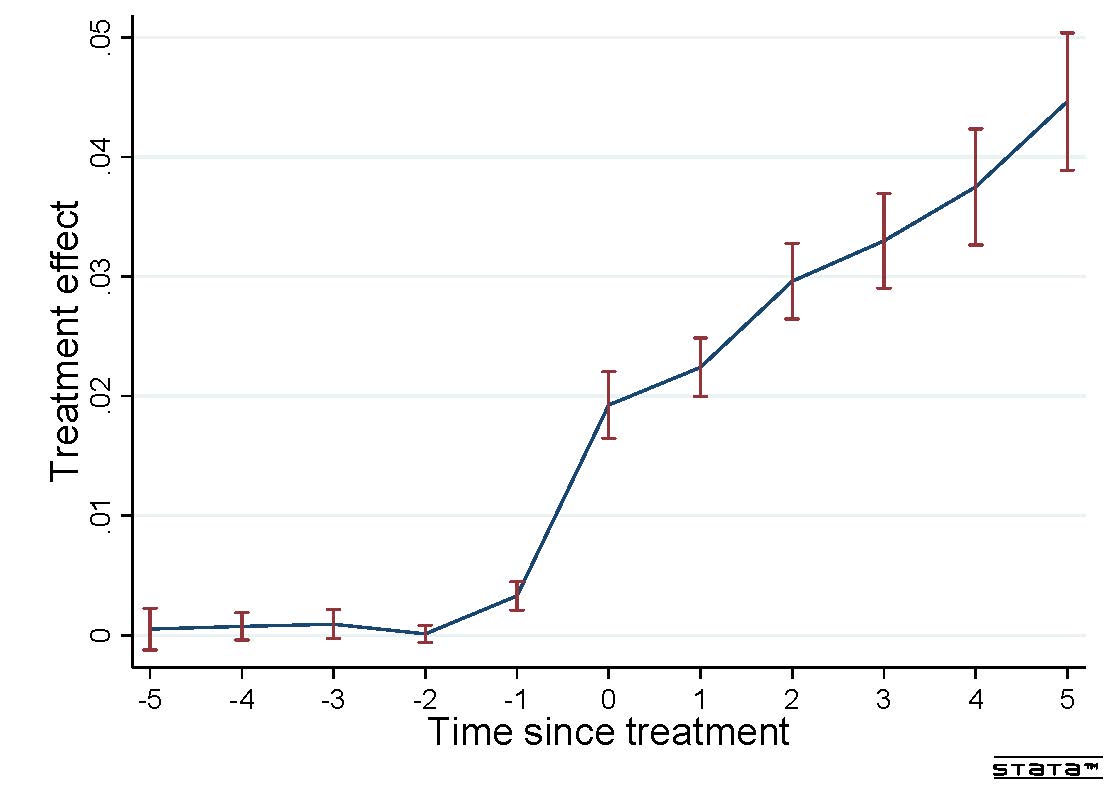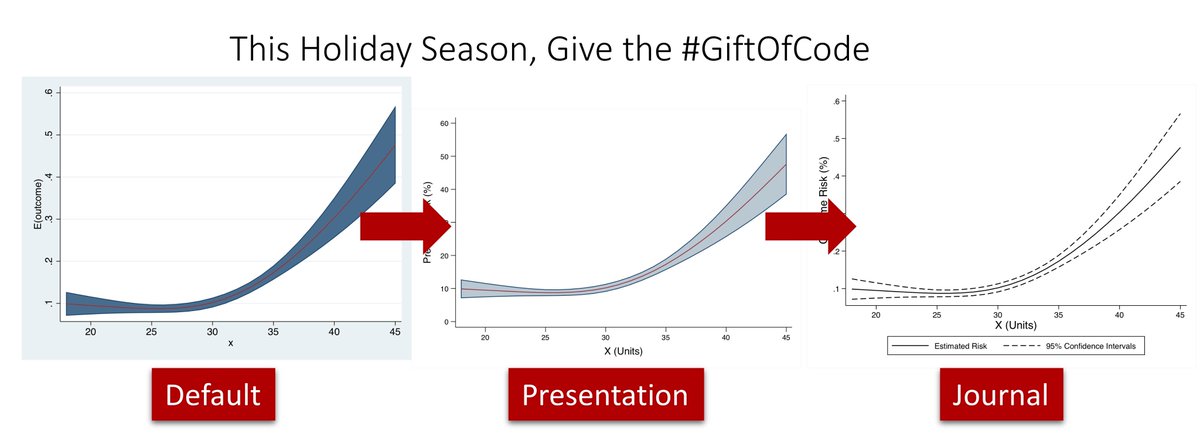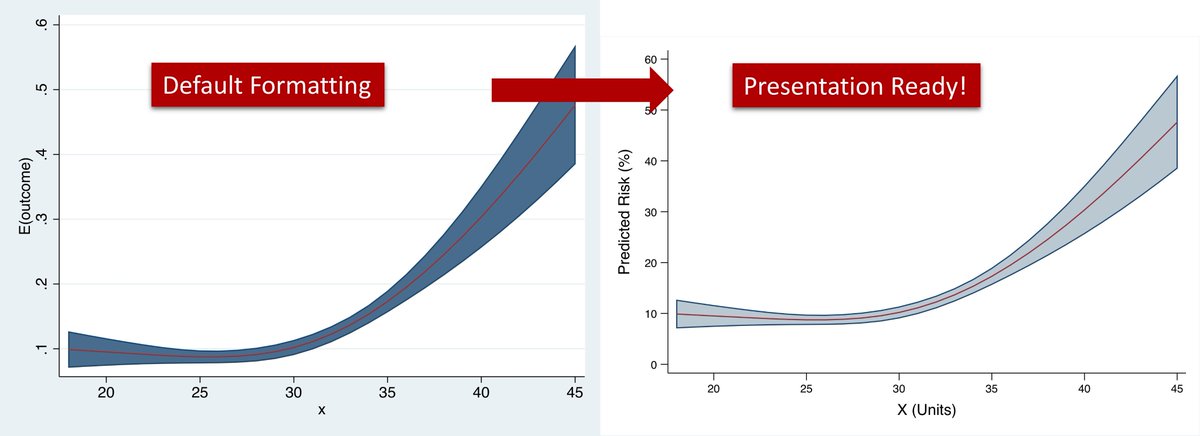Discover and read the best of Twitter Threads about #STATA
Most recents (21)
URL sharing is essential for online platforms and applications. It allows users to access specific resources on the internet, such as web pages, images, videos, files, and more. #APIs make sharing URLs even more seamless, like those offered by OpenDOSM
With URL sharing APIs, developers can provide users with a more streamlined experience, allowing them to share URLs and other data without leaving the application. This can drive more traffic to the platform and increase user engagement. #OpenData #API
A URL sharing API can improve the overall user experience, making it easier for users to quickly and easily share URLs and other data. This is especially useful for social media platforms and applications that rely heavily on user-generated content. #OpenDataAPI
Top 25 #Stata Commonly used Visualizations with full replication code is now up!
Link:
medium.com/the-stata-gall…
#Stataviz #Dataviz #TheStataGallery #visualization
Do press clap at the bottom of website if you like and want more such posts.
Preview of some graphs below 👇
Link:
medium.com/the-stata-gall…
#Stataviz #Dataviz #TheStataGallery #visualization
Do press clap at the bottom of website if you like and want more such posts.
Preview of some graphs below 👇
The #30DayMapChallenge 2022 starts tomorrow. In the last 2 years a lot of work has been put in @Stata to mainstream some of the map elements we find in other softwares. He is a 🧵 on the different types of maps one can make. If you want the code for any, just msg! Let's go 👇
The basic #spmap package can already do a lot! Here are some examples using standard spmap syntax.
These were made for the online #GIS tutorials earlier this year that were fairly well attended! Over 1400+ registrations and 500+ ppl online. Might repeat it again.



These were made for the online #GIS tutorials earlier this year that were fairly well attended! Over 1400+ registrations and 500+ ppl online. Might repeat it again.




The #bimap package that actually was the result of the #30DayMapChallenge last year allows you to combine two variables to check for interesting spatial correlations.
Install from SSC (ssc install bimap, replace)
See GitHub for further instructions
github.com/asjadnaqvi/sta…



Install from SSC (ssc install bimap, replace)
See GitHub for further instructions
github.com/asjadnaqvi/sta…




A late night 🧵 on some tips for making grayscale (BW) & colorblind (cblind) friendly graphs in @Stata. BW in case people print out papers, and cblind to make sure documents are "barrier free".
Graphs have 3 elements that we can control: colors, line patterns, & symbols.
1/
Graphs have 3 elements that we can control: colors, line patterns, & symbols.
1/
Let's start with colors: Whatever color scheme we use, we can check whether it will pass the BW and cblind tests. This can be easily tested using the palettes package. Install these, if you haven't already:
ssc install palettes, replace
ssc install colrspace, replace
2/
ssc install palettes, replace
ssc install colrspace, replace
2/
There are three types of common color-blindnesses that can we can check in #Stata: "Protanopia" & "Deuteranopia" where shades of red and green are not discernable, & "Tritanopia" where blue-green, purple-red, yellow-pink are hard to differentiate.
Test yourself 👇👇
3/
Test yourself 👇👇
3/

A 🧵 to keep track of my @Stata #dataviz packages 👇
1) 𝘀𝗰𝗵𝗲𝗺𝗲𝗽𝗮𝗰𝗸: Has a large collection of ready-to-use #Stata #schemes.
Two I personally use all the time are white_tableau (clean white) and neon (black background).
github.com/asjadnaqvi/Sta…
1) 𝘀𝗰𝗵𝗲𝗺𝗲𝗽𝗮𝗰𝗸: Has a large collection of ready-to-use #Stata #schemes.
Two I personally use all the time are white_tableau (clean white) and neon (black background).
github.com/asjadnaqvi/Sta…
My turn to learn the new #DiD literature.
I estimated tried as many relevant methods as I could find on two (simple) DGPs.
All #STATA code here: github.com/azev77/Compare…
#EconTwitter what did I miss? (1/n)
I estimated tried as many relevant methods as I could find on two (simple) DGPs.
All #STATA code here: github.com/azev77/Compare…
#EconTwitter what did I miss? (1/n)

Thanks to @AsjadNaqvi @borusyak @XJaravel @jannspiess @kylefbutts @pedrohcgs @CdeChaisemartin @arindube I missed a bunch (sorry)
1: asjadnaqvi.github.io/DiD/ is maybe the best resource to learn these methods
1: asjadnaqvi.github.io/DiD/ is maybe the best resource to learn these methods
2: the world would be much better off if these methods were implemented in a modern/fast language like #JuliaLang
github.com/JuliaDiffinDif…
by @JunyuanChenEcon
3: why doesn't anyone compare the staggered DiD methods to #SCM?
I think I'll do that...
github.com/JuliaDiffinDif…
by @JunyuanChenEcon
3: why doesn't anyone compare the staggered DiD methods to #SCM?
I think I'll do that...
What to do when you're analysing data arising from a Randomised Controllled Trial (RCT) and you have noncompliance in the treatment group?
A thread on Complier Average Causal Effect (CACE) modeling... /1
#Stata #RCT #CACE #gsem
A thread on Complier Average Causal Effect (CACE) modeling... /1
#Stata #RCT #CACE #gsem
In RCTs, we compare the outcome in the treatment and the control group. When everyone in the treatment receives the treatment in full or (comply), trial arm assignment is enough to estimate the effect of the intervention. We call this "intention-to-treat" (ITT). /2
The problem is that some participants may not receive the treatment in full or comply with all the requirements of the intervention itself. This produces bias in the ITT estimate, "diluting" the effect of the intervention, which is why we need to account for noncompliance. /3
#Olympics Athletes. #Tokyo2020 is held under a #stateofemergency . #COVID19 infections are TRIPLING and #DeltaVariant is becoming DOMINANT. Hosting the Games during a pandemic is deemed as an 'affront to humanity'. DON'T BE A PART OF IT.
#オリンピック 選手の皆さん。 #東京2020 は #緊急事態宣言 下で開催されます。#新型コロナ の感染は3倍に広がっており #デルタ変異株 が優勢株となるのは必至です。パンデミックの最中に大会を開催することは「人類への冒涜」とみなされます。その一端を担わないでください。
🇧🇬 #Токио2020 се провежда в условията на #извънредно положение . Инфекциите с #COVID19 се увеличават с три пъти, а #DeltaVariant става доминиращ. Провеждането на Игрите по време на пандемия се счита за "оскърбление за човечеството". НЕ БЪДЕТЕ ЧАСТ ОТ ТОВА.
On the 1st anniversary of my twitter account, I'm happy to share w/the #EconTwitter community our #stata commands for event studies:
did_imputation: robust and efficient imputation estimator
event_plot: event study plots after various estimation methods
github.com/borusyak/did_i…
did_imputation: robust and efficient imputation estimator
event_plot: event study plots after various estimation methods
github.com/borusyak/did_i…
I’ve discussed did_imputation in the 🧵 on our paper w/@XJaravel and @jannspiess
Key points: the estimator is
- robust to heterogeneous effects
- efficient under homoskedasticity
- transparent
- robust to pre-testing
- works w/controls, triple-diffs, etc
Key points: the estimator is
- robust to heterogeneous effects
- efficient under homoskedasticity
- transparent
- robust to pre-testing
- works w/controls, triple-diffs, etc
Now on the plotting command:
With event_plot, you can make event study plots for at least 5 methods:
- our did_imputation
- robust estimators of @CdeChaisemartin-D’Haultfoeuille, Callaway-@pedrohcgs, Sun-Abraham
- traditional OLS
And combine them with each other if you wish!
With event_plot, you can make event study plots for at least 5 methods:
- our did_imputation
- robust estimators of @CdeChaisemartin-D’Haultfoeuille, Callaway-@pedrohcgs, Sun-Abraham
- traditional OLS
And combine them with each other if you wish!

1/
Interesting study coming out suggesting full lockdowns offer no benefit over softer measures.
Great they released the code! It is worth a deeper dig as the journal is fairly vague about the data used. I've stuck the source code on my GitHub here: github.com/dr-harper/NPI-…
Interesting study coming out suggesting full lockdowns offer no benefit over softer measures.
Great they released the code! It is worth a deeper dig as the journal is fairly vague about the data used. I've stuck the source code on my GitHub here: github.com/dr-harper/NPI-…
2/
It might sound fair to accuse me of bias, with the only reason that I question this study because it challenges my view of lockdowns.
I have seen papers suggest lockdowns don't have a big impact, but this seems to suggest they have a negative impact? What is going on
It might sound fair to accuse me of bias, with the only reason that I question this study because it challenges my view of lockdowns.
I have seen papers suggest lockdowns don't have a big impact, but this seems to suggest they have a negative impact? What is going on

3/
Now, one threat not considered by the paper is potential confounding variables. See statisticshowto.com/experimental-d…
Is it fair to compare international countries purely on case rates and lockdown measures? Are there broader differences? Highly possible
Now, one threat not considered by the paper is potential confounding variables. See statisticshowto.com/experimental-d…
Is it fair to compare international countries purely on case rates and lockdown measures? Are there broader differences? Highly possible

I am humbled and privilleged to note that my #Research paper; "Sources of #Unemployment in #Lesotho" is now available and can be accessed via the People's Republic of #China's National #Science and #Technology #Library - #NSTL. I give thanks 😎 

So far this year, I have successfully published three #Research articles in #Macroeconomics & #Finance, with another two in press. I am currently hammering away at a handful of working papers which will most certainly find a home in reputable #Journals, come 2021 🙏🏽🙂 

Im currently internalising the very insightful reviewer comments on my latest #Research paper titled; "Investigating Determinants of Commercial Bank Spreads in #Lesotho", from the good folks over at the globally reputable #International #Journal of #Finance & #Economics #IJFE 😊 



Today I want to give a shout-out to @TymonSloczynski paper, "Interpreting OLS Estimands When Treatment Effects Are Heterogeneous: Smaller Groups Get Larger Weights", that is currently available here:
people.brandeis.edu/~tslocz/Sloczy…
Paper is conditionally accepted at ReStat!
people.brandeis.edu/~tslocz/Sloczy…
Paper is conditionally accepted at ReStat!
This is a very interesting paper that highlights some potential pitfalls of not separating the identification and estimation/inference steps when doing causal inference.
In other words, OLS may be messing up your regression interpretations.
So good to see that I am not alone!
In other words, OLS may be messing up your regression interpretations.
So good to see that I am not alone!
Regression analysis with observational data remains the primary analytical method in political science.
However, we will never know whether we controlled for all unobserved confounders.
New sensitivity tools help to assess how likely results are robust to missing controls.


However, we will never know whether we controlled for all unobserved confounders.
New sensitivity tools help to assess how likely results are robust to missing controls.



The robustness value (@analisereal,@chadhazlett) applies to multivar. regressions: It is the minimum strength of association that unobserved confounding would need to have, both with the treatment and with the outcome, to change the research conclusions.
The robustness value can be calculated with a Shiny Application (carloscinelli.shinyapps.io/robustness_val…) or with the #rstats package sensemakr.
THREAD (1/10) in which I describe results of preliminary analyses of publicly available #COVID19 data from Singapore. Please interpret these cautiously, as the data are limited and there is no adjustment for confounding, etc.
First, an epidemic curve. No peak in cases yet.
First, an epidemic curve. No peak in cases yet.

People seemed to be into the idea, so I am launching the Library of Statistical Techniques, or LOST. LOST is a Wiki guide to doing things in statistical software/code. Instructions, examples, and a little Rosetta stone btwn languages. github.com/NickCH-K/LOST/…
What's the point? (a) it's a way of providing more general guidance, in many languages at once, than StackExchange, (b) it makes it easy to link techniques to encourage best practices (i.e. the page about fixed effects can encourage, and link to, the page on clustering)
(c) when there are many different ways to do the same thing, allows for compare-and-contrast, or even savvy editors pointing towards a up-to-date "best" way, both difficult with Googling, and (d) offers a way to learn the material that's task-first.
At #SDSS2019, I am chairing a session on workflows with @TiffanyTimbers @mikelove @stephaniehicks at 3:45 in Regency C - it is tucked away a bit in the corridor between AB and D 

Let's chat about building a R community within your office. I was the only R user in the office and I also wanted people I could go to for help and just thought partner to solve problems. So, here are some of my lessons learned from building a R culture in the office!
👇👇
👇👇
📌Lesson 1: Don't tell or lecture about the benefits of #rstats, instead show them a demonstration!
People generally are motivated when they see how easy it is to start something small and with a specific example!
my ex: being able to work with multiple dataframes concurrently.
People generally are motivated when they see how easy it is to start something small and with a specific example!
my ex: being able to work with multiple dataframes concurrently.
#econtwitter: Want to produce event-study graph like this one, using estimators robust to heterogeneous treatment effects, across units or over time? You may want to check our new did_multipleGT #Stata package. "ssc install did_multipleGT" to install package and help file. 1/n 



did_multipleGT can be used in DID designs with multiple groups and periods, where all units in same group and period have same treatment (sharp designs). E.g.: treatment is county- or state-level variable. Treatment does not have to be binary. 2/n
By default, did_multipleGT computes Wald-TC estimator of instantaneous treatment effect at the time when switchers switch introduced in Section 3.3 of papers.ssrn.com/sol3/papers.cf… 3/n
1/ Easter, like many religious holidays, has been tied to peace & conflict.
We explored the link b/w religious holidays and violence in my Quantitative Security course.
👇is an Easter morning summary.
We explored the link b/w religious holidays and violence in my Quantitative Security course.
👇is an Easter morning summary.
2/ There is great work exploring the link b/w religious beliefs and violence, such as this @Journal_IS piece by @monicaduffytoft
mitpressjournals.org/doi/abs/10.116…
mitpressjournals.org/doi/abs/10.116…
3/ But a newer line of work directly explores how religious holidays alter patterns of violence.
Examples include Ron Hassner's @SecStudies_Jrnl piece exploring the relationship between "Sacred Time" and conflict initiation...
tandfonline.com/doi/abs/10.108…
Examples include Ron Hassner's @SecStudies_Jrnl piece exploring the relationship between "Sacred Time" and conflict initiation...
tandfonline.com/doi/abs/10.108…
🎄🎅🎄🎅🎄🎅🎄🎅🎄🎅🎄🎅🎄🎅🎄🎅🎄🎅🎄🎅🎄
I’m feeling festive! I want to spread the cheer this holiday season by giving the #GiftOfCode for making beautiful figures! #EpiTwitter #StatsTwitter
🎄🎅🎄🎅🎄🎅🎄🎅🎄🎅🎄🎅🎄🎅🎄🎅🎄🎅🎄🎅
I’m feeling festive! I want to spread the cheer this holiday season by giving the #GiftOfCode for making beautiful figures! #EpiTwitter #StatsTwitter
🎄🎅🎄🎅🎄🎅🎄🎅🎄🎅🎄🎅🎄🎅🎄🎅🎄🎅🎄🎅

When I was starting out, I remember how it would take HOURS to get my figures looking just right.
Nothing was more valuable than example code for learning different #DataViz options 🎁
Nothing was more valuable than example code for learning different #DataViz options 🎁
First up:
These options in #stata for making this graph presentation-ready!
adjustrcspline, link(logit) scheme(vg_palec) ///
ylabel(, nogrid angle(horizontal)) ///
xtitle("X (Units)", size(medium)) ytitle("Outcome Risk (%)", size(medium)) ///
graphregion(fcolor(white))
These options in #stata for making this graph presentation-ready!
adjustrcspline, link(logit) scheme(vg_palec) ///
ylabel(, nogrid angle(horizontal)) ///
xtitle("X (Units)", size(medium)) ytitle("Outcome Risk (%)", size(medium)) ///
graphregion(fcolor(white))







